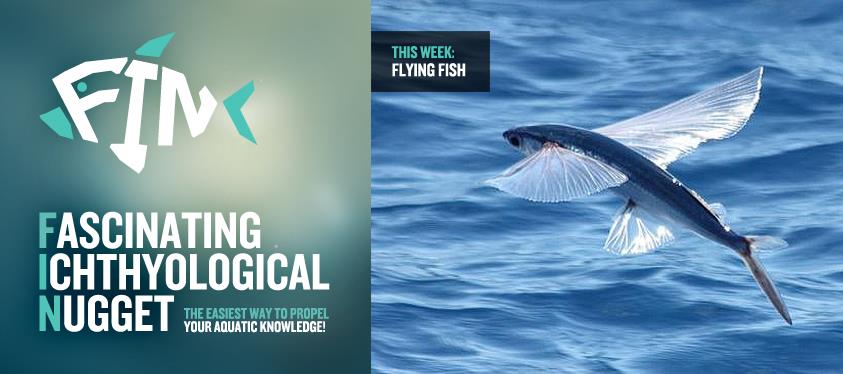Cookie Policy
We use cookies to help improve the experience you have on this site. You can find out more here.
We use cookies to help improve the experience you have on this site. You can find out more here.


Unrestrained by their watery realm, some fishes have taken to the skies in a number of ways. For example, Amazonian Hatchetfish (e.g. Silver Hatchetfish; Gasteropelecus sternicla) possess large pectoral fins and deep chests housing muscles that allow limited flapping to make the most of jumps out of the water.
However, undoubtably the masters of aeronautics among fishes are the iconic Flying Fish (Exocoetidae). Exocoetidae is a family of marine fish in the order Beloniformes of class Actinopterygii. In fact, the oldest known fossil of a flying or gliding fish is Potanichthys xingyiensis, which dates back to the Middle Triassic period, some 235-242 million years ago. However, this fossil is not related to modern flying fish, which evolved independently a mere 65 million years ago!
This fish has had significant implications over the years. The term "Exocoetidae" is not only the present scientific name for a genus of flying fish in this family, but is also the general name in Latin for a flying fish. The suffix '-idae', common for indicating a family, follows the root of the Latin word 'exocoetus'. This means literally 'sleeping outside', so named as flying fish were once believed to leave the water to sleep on the shore. Historically, the island of Barbados was nicknamed 'the land of the flying fish', where today it is the official national fish and many aspects of Barbadian culture centre around the flying fish: it is depicted on coins, as sculptures in fountains and in much of its artwork. And finally, interestingly enough, this fish gives its name to the notorious Exocet missile, due to the similar way it flies 1-2m above the water's surface once fired!
Flying fish live in all of the oceans, particularly in tropical and warm subtropical waters, feeding mainly on plankton. No doubt the most striking feature of these fish are their pectoral fins, which are unusually large, and enable the fish to hide and escape from predators (including dolphins, tuna, marlin, birds, squids and porpoises) by leaping out of the water and flying through the air above the water's surface. In order to glide upward out of the water, a flying fish moves its tail up to 70 times per second. It then spreads its pectoral fins and tilts them slightly upward to provide lift. At the end of a glide, it folds its pectoral fins to re-enter the sea, or drops its tail into the water to push against the water to lift itself for another glide, and gives the fish the option of adjusting its direction. The curved profile of the 'wing' is comparable to the aerodynamic shape of a bird wing. The fish is also able to increase the time in the air by flying straight into or at an angle to the direction of updrafts created by a combination of air and ocean currents. Such was the fascination with these fishes flying ability, between 1900-1930, flying fish were closely studied as potential designs used to develop airplanes.
Records state that flying fish flights can reach speeds of around 70kph (43mph) and easily cover over 400 metres (1300ft) in the right conditions. Such flights can last 40+ seconds with a maximum cruising altitude of 6m (20ft) above the waters surface. So prolific are these flights, flying fish can often be seen from ships as they skitter across the surface, but due to the speed, height and length, some accounts have them, unfortunately, landing on ships' decks. So like everything, this amazing behaviour does have it's disadvantages…?
For delivery before Christmas, orders must be placed on or before 3pm on Wednesday 20th December. We cannot guarantee delivery of these orders pre-Christmas as we are reliant on our couriers, but will use our best endeavours to get orders placed on this date out to you before Christmas. For full details of our festive delivery and opening times click here
Please note: online orders placed after 3pm on Friday 22nd December will not be dispatched until the New Year. For full details of our festive delivery and opening times click here